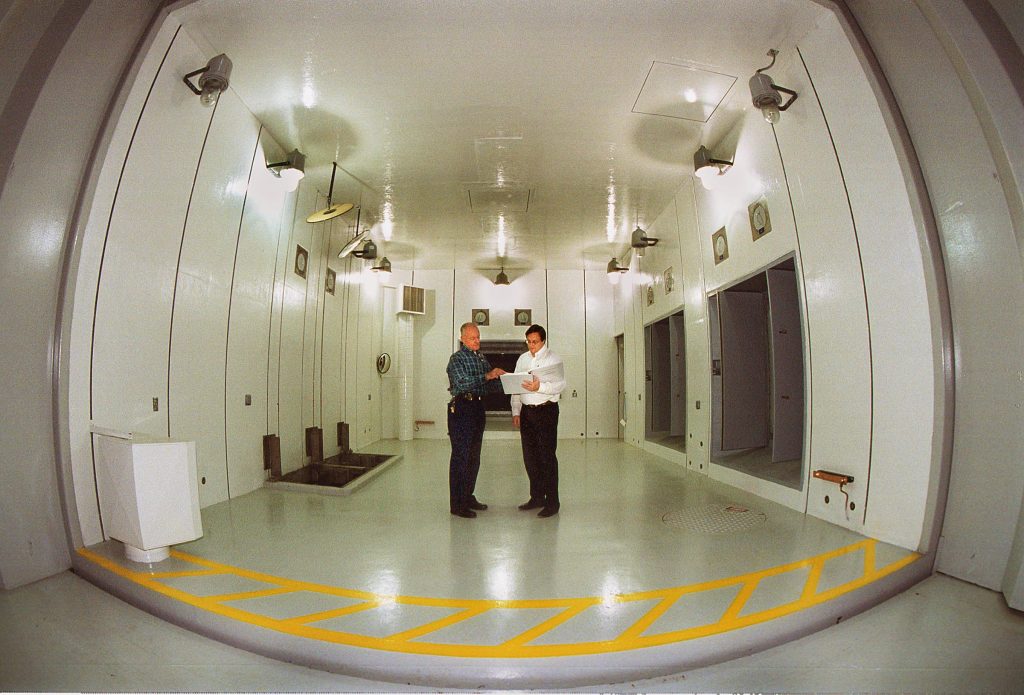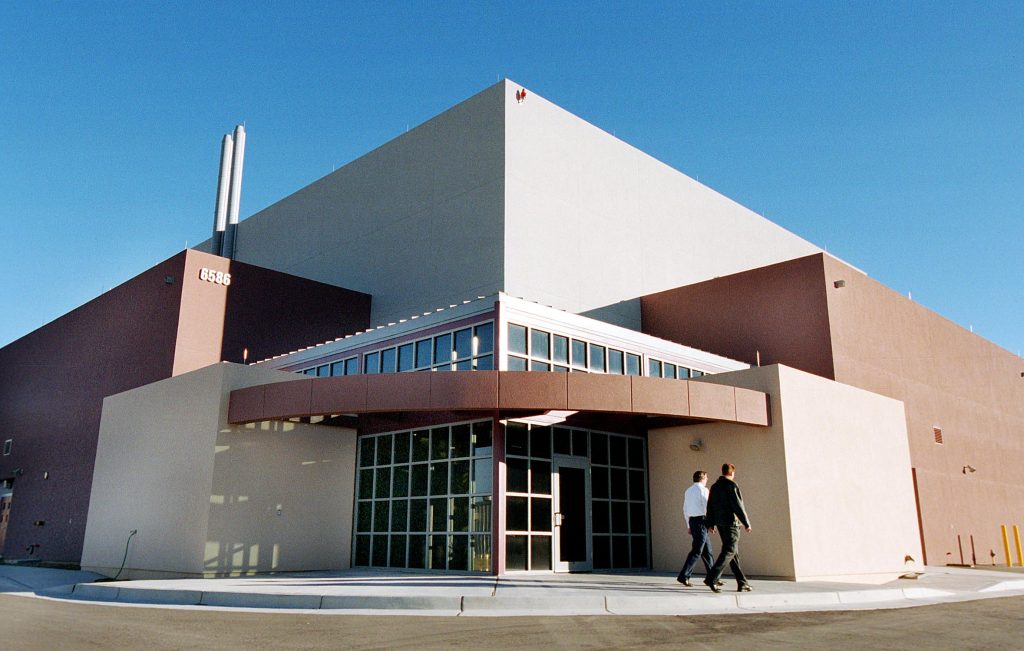Spacecraft guidance system parts tested at Lab’s Gamma Irradiation Facility

Download 300dpi JPEG image, “GIFChamber.jpg,” 600K (Media are welcome to download/publish this image with related news stories.)
ALBUQUERQUE, N.M. — Like the Creature from the Black Lagoon, the rods of radioactive cobalt-60 rose from their lair, an 18-ft.-deep pool in the Gamma Irradiation Facility of Sandia National Laboratories.
Raised by an electrically driven elevator into a dry, empty room with walls six feet thick, the radioactive material ionized some of the guidance system components of the Deep Impact spacecraft, expected to impact Comet Tempel 1 on July 4.
Then the rods descended back to the secure bottom of the shielding pool.
Afterwards, the parts were removed and tested to see how well their functionality survived the powerful irradiation.
The purpose of the exposure was to be sure the guidance system components were sufficiently radiation-hardened to survive their journey through space. The tests took place in spring 2003.
On Monday the rocket is expected to release a wine-cask-sized impactor and transmit data back to Earth on the results of the collision.

Download 300dpi JPEG image, “GIF6586.jpg,” 600K (Media are welcome to download/publish this image with related news stories.)
The reason for the space mission is twofold: to expose to human investigation the inner materials of the comet, believed to be in the same unaltered state as when the solar system originally formed; and to gain information to protect Earth by learning exactly what happens when a potentially deadly space voyager meets with a high-speed impact. Will it swerve? Crack? Pulverize? Ignore the impact?
“We provided the gamma radiation environment to test samples of the rocket’s electronic parts before and after being hardened,” says Sandia researcher Don Berry.
The principal mission of the gamma irradiation facility is to ensure that nuclear weapons components can survive hostile environments (https://newsreleases.sandia.gov/sandias-new-gamma-irradiation-facility-can-test-microchips-satellites-and-everything-in-between/).